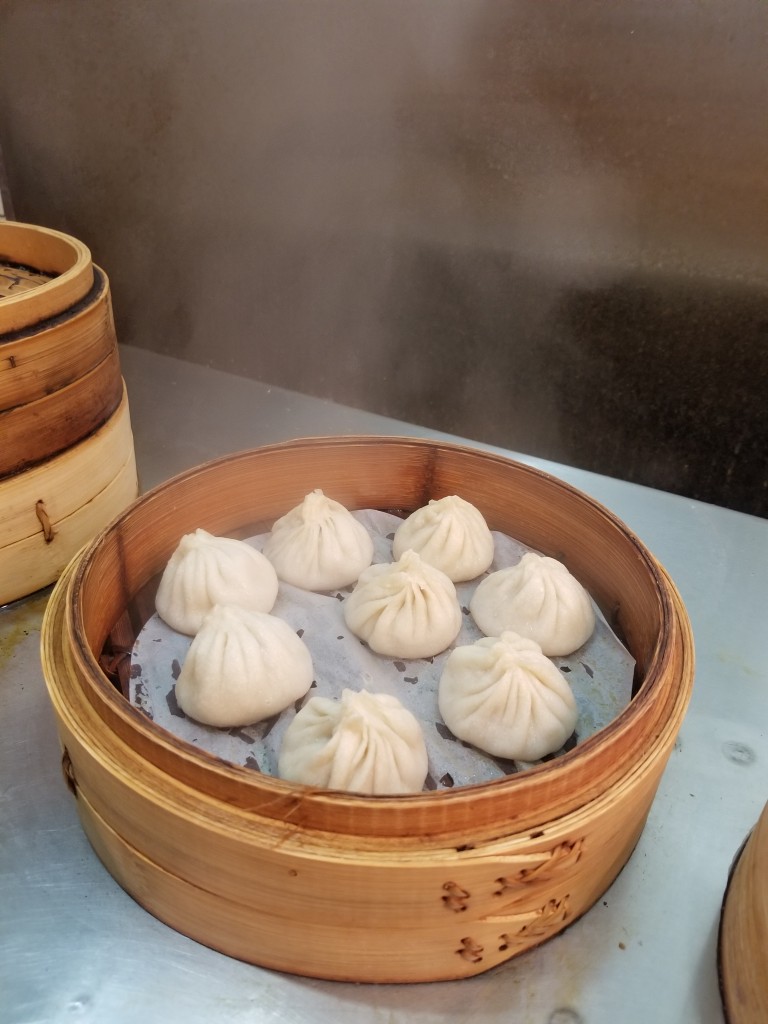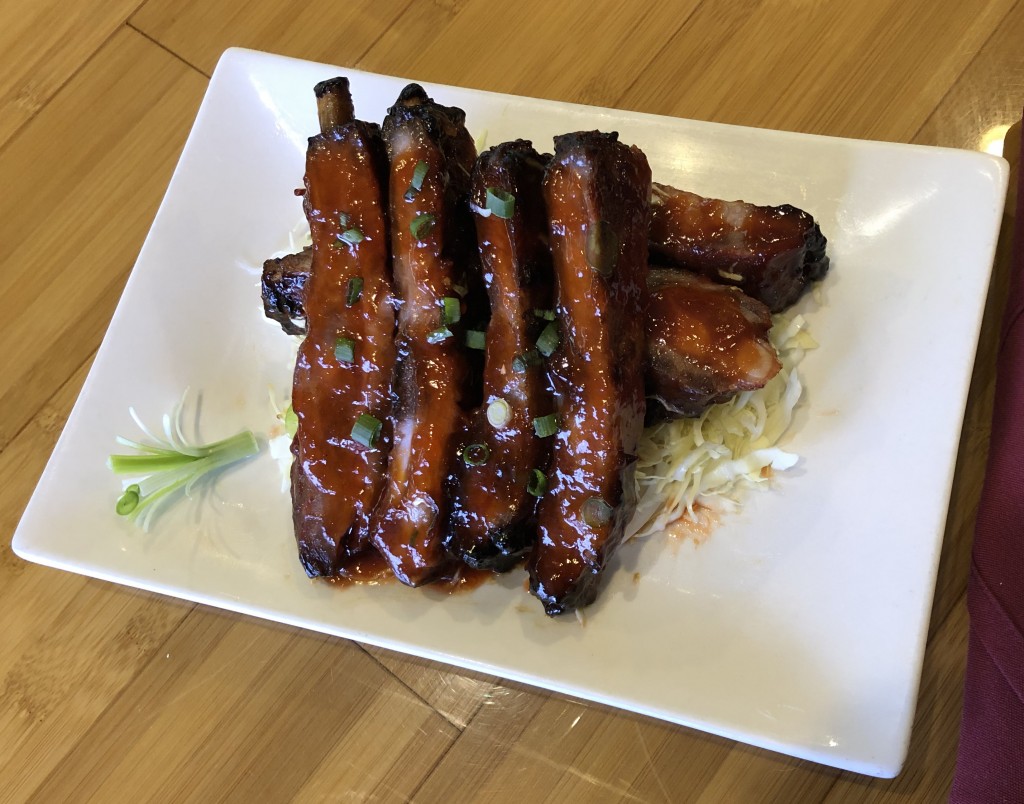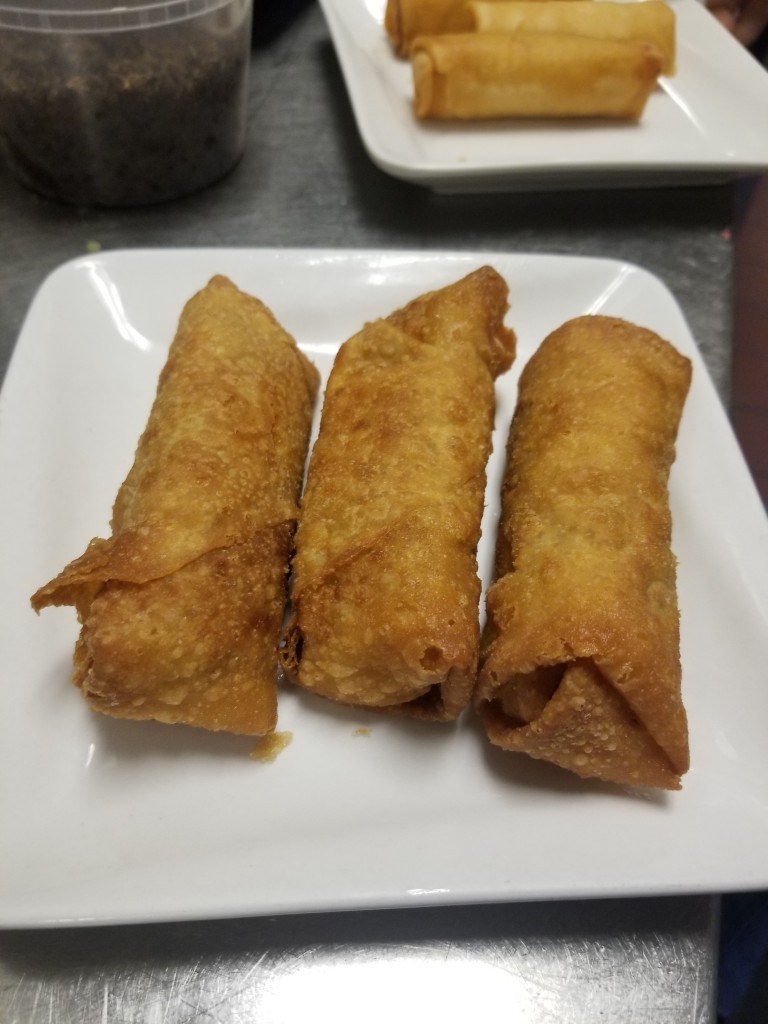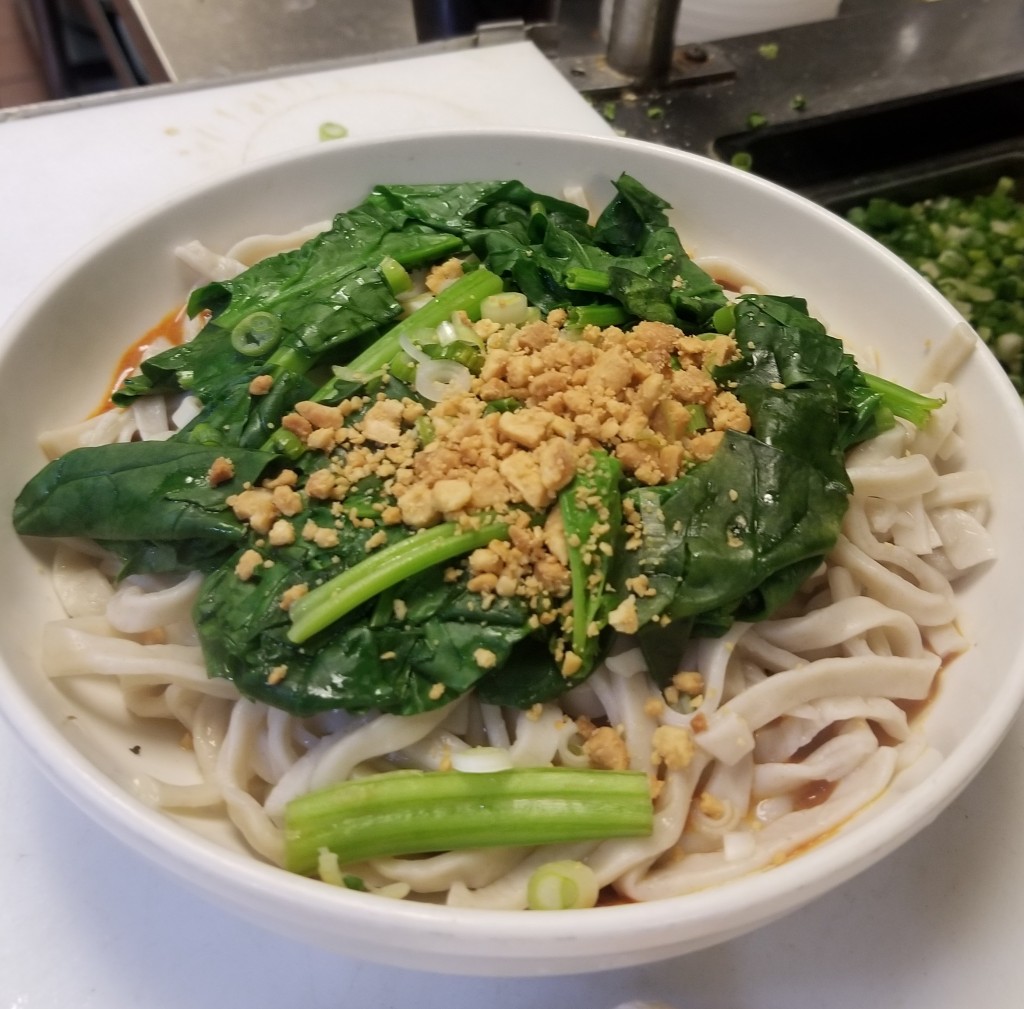Chinese New Year: A Celebration of Food
ArtandSeek.net January 27, 2020 13Biting into the chewy skin of a xiao long bao (a Chinese soup dumpling), scalding hot juices burst forward like a breaking dam of umami broth. The cooking process of the soup dumpling is a carefully orchestrated symphony as the meat and/or veggie filling inside slowly releases liquid, filling up the pouch with a lava-like flow of hot soup.
As Chinese New Year kicked off this weekend, dumplings were one of the most commonly eaten dishes because they resemble gold coins, which symbolize good fortune.

Steaming dumplings. Photo: Elizabeth Myong.
Lunar New Year is one of the biggest celebrations of the year for Chinese people and is celebrated by roughly one-sixth of the world’s population, in countries across East Asia, according to “National Geographic.”
And for Chinese people, food is the star of the show.
During Chinese New Year, food unites families and friends around the dinner table, links past and present, but also shows the vast diversity of the more than five million Chinese people who live in the United States. The new year officially began on Saturday and will last until February 8.
“Food is very important in Chinese culture,” said Tina Higley, of Plano. Her parents are from China and growing up, food and Chinese culture went hand-in-hand. She said shape, color, and sound are all symbolic when it comes to Chinese food.
“The normal greeting for Chinese is, ‘Have you eaten yet?’”, no matter what time of day,” she said.
An Assorted Feast
On Friday afternoon at Jeng Chi, a Chinese restaurant in Richardson, 700 people were expected for New Year’s Eve. The restaurant estimated 2,000 people would celebrate there over the next four days, the peak of the holiday.
“Today being New Years Eve, we will see a large influx of walk-in guests celebrating, starting at lunch today through dinner all the way through the weekend,” said Janelle Teng, co-owner of Jeng Chi.
Dumplings are just one of many essential Chinese New Year dishes. Whole fish, noodles, meat dishes, oranges, and various vegetables are also typically present.
Noodles symbolize longevity. Whole fish is a must because it represents prosperity – in Chinese, the word for “fish” sounds like the word for “surplus”. Many Chinese people choose not to eat the whole fish because leftovers mean there will be a surplus for the new year.
However, every family celebrates with special dishes according to where they are from or how much time they have to make them.
“Think of it as Thanksgiving,” Eddie Pan, a Dallas Chinese Community Center member, said. “There are families who eat roast turkey and some eat fried turkey. There are families who will have green bean casserole and there are some who will have potatoes. There’s really not a set menu that you have to follow.”
Zhen Li agreed. She stopped to talk while picking up her son from Chinese school in Richardson’s Chinatown. She said the dishes made during Chinese New Year are incredibly varied, because China is so large and diverse.
“South of China, I think they eat yearly tang yuan [sweet rice balls] and North of China eat dumplings and there are a lot of famous meals like gong bao ji ding [kung pao chicken] and boiled fish,” she said.

A variety of meat dishes are usually served during Chinese New Year. Photo: Jeng Chi Restaurant.
While every Chinese person enjoys different dishes, many agree mom’s cooking is best.
Higley said her mom’s turnip cakes were a favorite.
“My mom will make a huge batch and share with friends and neighbors,” she said. “It was made with shredded white turnip, rice flours, salted pork, dried mushroom and dried shrimp. That was one of my favorite breakfast foods.”
She said her mom would also make a vegetable medley with 10 different julienned vegetables. Higley said every family has their own version with either a lucky number of 8 or 10 different kinds of vegetables.
Bringing Family Together
For many Chinese people, food is a metaphorical beacon that gathers family and friends around the table, no matter how busy or distant they are.
While waiting for his order at Jeng Chi, David Dong said food helps him stay in touch with relatives.
“Food has been the most critical part to bring family together basically – and we’re all pretty apart, so my parents are in Canada,” he said. “My wife’s family is in Brazil and we’re in Texas with no immediate family around. Her brother is in London and so on, so food is always something that brings everyone together.”

Oranges are a symbol of good luck during Chinese New Year. Photo: Elizabeth Myong.
For many Chinese people, the New Year is a reason to come home and connect with loved ones.
“I think that food can get people together and enjoy the food while talking – that’s a very nice thing to stay together,” Li said. “It’s like Thanksgiving here in the States, the big feast and everybody comes home and enjoys a good meal together.”
Pan said Chinese New Year means families will also spend time together by watching the New Year special on TV or playing poker and mahjong together. Elders give out red envelopes, hóng bāo, filled with money to children.
“To me, Chinese New Year is about celebrating the new year with family, friends, and loved ones, “ Jessica Chu said. “I enjoy the food, but I enjoy the company more.”
A Connection Between Tradition and Modernity
Chinese New Year has been celebrated for thousands of years, but the holiday has continued to evolve.
For the Chinese population in the United States who have immigrated or are visiting students, adapting to a new home means creating new traditions.
According to Pan, it is the most traditional to cook at home but some Chinese people simply don’t have the time or energy to spend days in advance preparing an elaborate meal.
“So in Dallas, people typically eat at home (if their whole family immigrated here), or the students will gather together and have a pot-luck,” he said. “There are also occasions that if you want to have joint Chinese New Year celebrations between two or more families, then they’ll go out…or simply if they are too busy to cook.”

Spring rolls are a common dish for Chinese New Year. Photo: Elizabeth Myong.
Back in China and Taiwan, the holiday is typically more elaborate. While the Chinese population in America usually has a one-day or weekend-long celebration, in China, the event lasts up to six days and includes family trips. Many stores close for four days and will offer huge sales and “bags of luck” that hold mystery items.
Dong, who was born in China but grew up in Canada, said he doesn’t keep many traditions from his childhood, but it is important to him that he passes down an appreciation of Chinese New Year to his children.
He said he hopes to “[bring] that tradition to the younger generation, my two sons, and [make] sure they know what it’s about…try to participate as much as possible, keep that gathering together.”
Ruthie Han sat down for a quick lunchtime celebration at Jeng Chi on New Year’s Eve, but she remembers much more elaborate traditions as a child.
Han said her mother would begin cooking a week in advance, preparing an elaborate meal of fish, dumplings – and especially meatballs, symbolizing happiness.

Noodles are an important dish during Chinese New Year that represents longevity. Photo: Elizabeth Myong.
Each of the xiao long bao have the same doughy exterior and 14 carefully-crafted folds, but every dumpling is unique in its own right – just like the Chinese people who invented the dish. Some parcels are filled with pork, others with lamb or vegetables. Some are colored red or green, while others are made with a spicy dough.
Yet when nestled in a steaming bamboo basket, all are a reminder of a fortuitous year to come.












